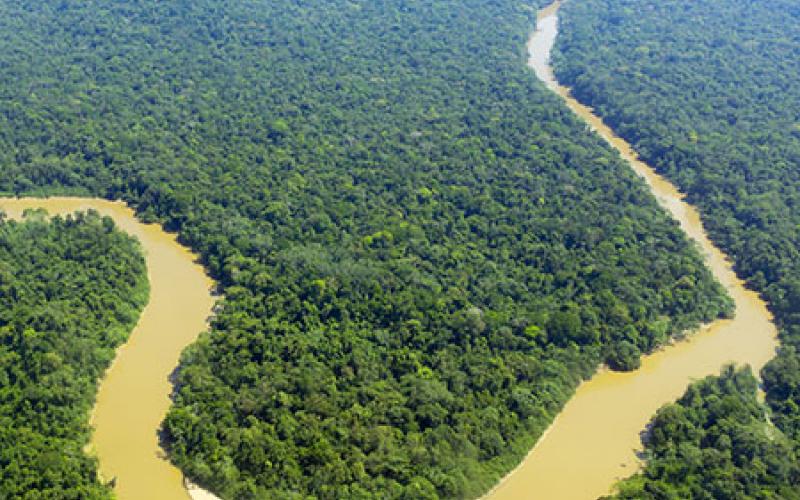Plant domestication in Amazonian forests: Can you see the human for the trees?

Plant domestication in Amazonian forests: Can you see the human for the trees?
A recent study shows that pre-Columbian Amazonian societies played a key role in the structure of current tree communities. The results refute the idea of the Amazonia as an unspoiled place and highlights the contribution of ancient societies to the shaping of the current forest composition.
Levis, C., F. R. C. Costa, F. Bongers, M. Peña-Claros, C. R. Clement, A. B. Junqueira, E. G. Neves, et al. 2017. “Persistent Effects of Pre-Columbian Plant Domestication on Amazonian Forest Composition.” Science 355 (6328): 925–31. DOI: 10.1126/science.aal0157.
The Amazon rainforest: a vast territory, the planet’s so-called green lung. Here, the human hand has never been present. Or has it? Is this just an idyllic and romantic view encouraged by documentaries? A recent study published in Science indicates that this view is indeed a misconception; modern tree communities in the Amazonian basin, it finds, are to a large extent the result of pre-Columbian human shaping.
The authors, led by Carolina Levis with the Instituto Nacional de Pesquisas da Amazônia in Brazil, suggest that humans have played a key role in the domestication of forest trees, starting around 8,000 years ago. Humans selected and propagated certain, individual trees because of interesting traits (e.g. larger fruit sizes, tastier fruits). The authors found 85 woody species that show ancient domestication. These 85 species are five times more likely to be hyperdominant (i.e. the most common in the forest) than the other 16,000 estimated species present in Amazonia. Furthermore, hyperdominant, domesticated species are more widespread across Amazonian forests than non-domesticated hyperdominant species.
Researchers modeled forest composition from environmental and human variables. While the former refers to soil and climate factors (e.g. soil pH or rainfall), the location of archaeological sites and navigable rivers were the indicators of past human presence. Thus, they could overlay information layers for soil, climate, forest species, and human sites for the whole Amazonian basin. Results clearly show that forests closer to archaeological sites have higher abundance and richness of domesticated species at the Amazonia-wide level. Environmental conditions explained 30 percent of the variation in relative abundance and richness of domesticated species. But surprisingly, past human impact accounted for almost 20 percent, a relatively high percentage.
The authors suggest that humans most likely enriched forests with domesticated and useful species. Domesticated species appeared near archaeological sites despite having different geographical distributions and distinct ecological preferences. Furthermore, these species usually have a wide area of distribution and are more abundant in locations far from their origins of domestication. This also suggests that the abundance of these species could be used to help detect undiscovered archaeological sites.
These results refute the idea of Amazonian forests as being untouched by humankind, an idealized view widely spread among city dwellers and maybe influenced by wildlife documentaries and emotional environmentalism. If plant domestication shapes Amazonian forests to a level which was not understood before, many questions arise: Should we continue restricting human interference with non-virgin forests? Even more, should we be ashamed of this past human influence? And should we even “restore” these forests to their “original” state?
Traditional efforts have been centered on preservation and conservation, based on the supposedly pre-human forest model. But these efforts need to take into account the human footprint in the landscape. The use of forest resources can develop in ways that are ecologically friendly and economically viable (e.g. agroforestry, sustainable forest management). Thus, management and biodiversity preservation can go together. In short, this study brings up important questions of how perception can misguide environmental policy. Efforts should go beyond current polarization between intensively-managed forest plantations and strictly protected areas. All in all, human presence should be considered and included in the conservation equation.




